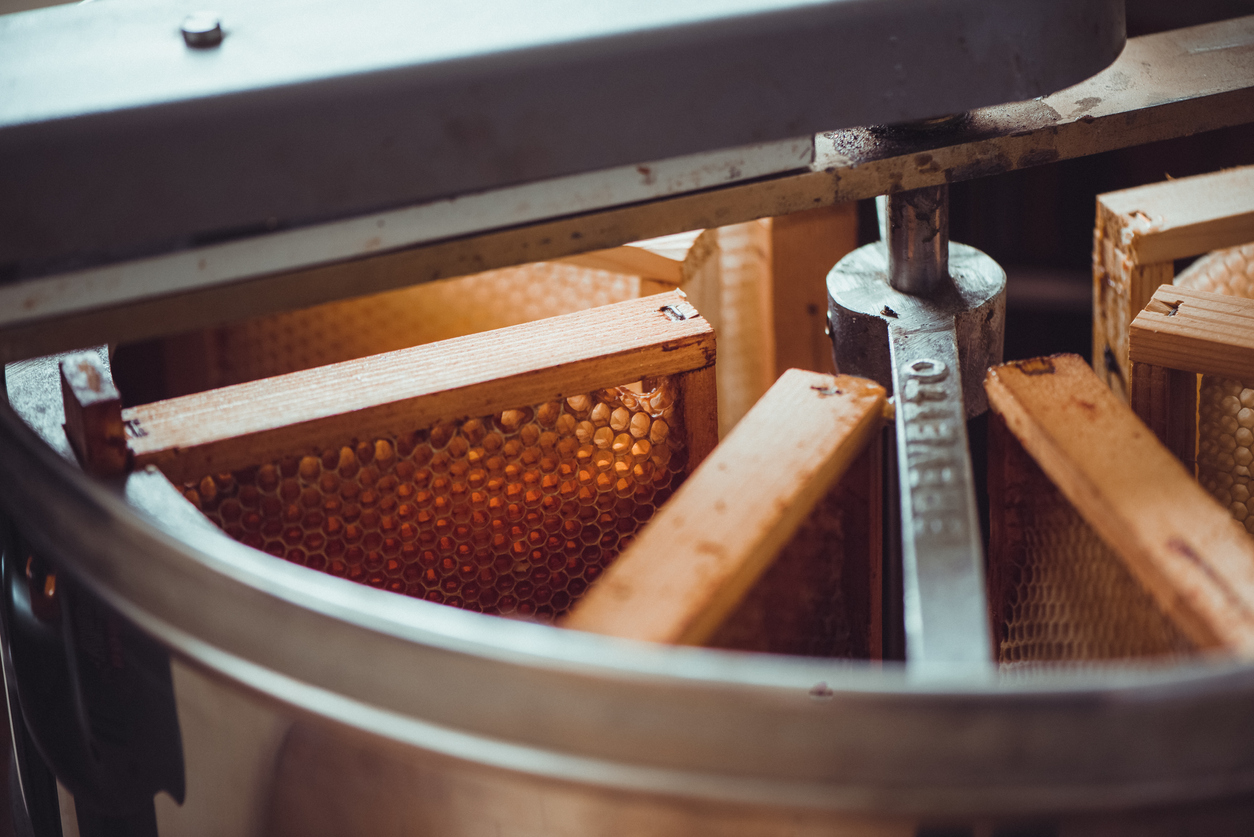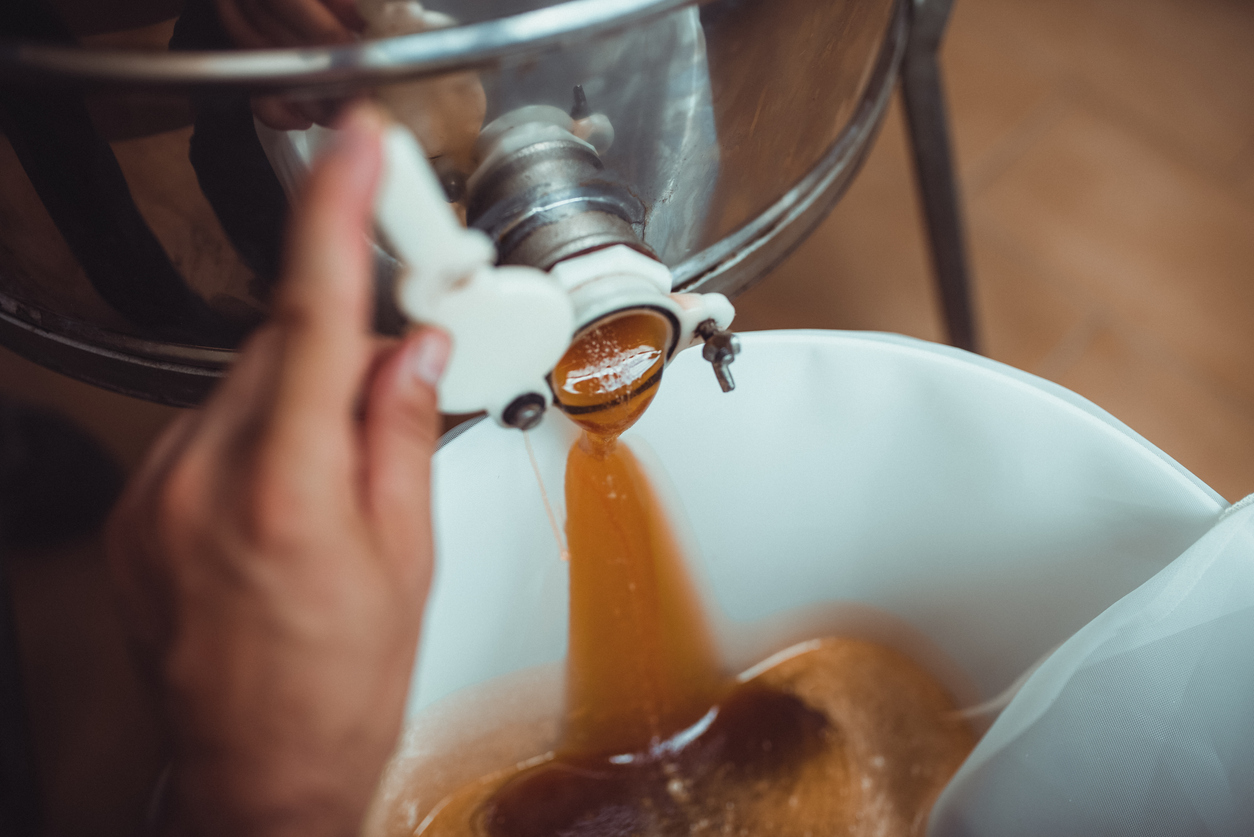NATURE’S MAGIC
HONEY

Gentle Extraction
Here at Backyard Bee’s, we hand process our honey and comb from uncapping to bottling.
In the Backyard Bee’s honey house, we uncap the comb using uncapping forks. Every piece of wax is saved, melted, and strained 3 times for use in our homemade products. All our honey is gravity strained and unheated, which preserves the honey’s natural aroma, nutritional value, and fine taste. The result is pure 100% natural honey for you to enjoy.
Honey Facts
Honey is the only food made by an insect, and eaten both by insects and humans.
Honey is made from nectar and a bee enzyme, that has been stored in honeycombs and has gone through a fermentation process.
Foraging bees have to fly about 55,000 miles to produce a pound of honey, visiting around 2 million flowers.
Natural honey also contains flower pollen grains. The study of pollen in honey is called ‘melissopalynology’.
Honey will keep indefinitely in a jar. However, it can react to cool temperatures by crystallizing. Read about crystallized honey.
Honey is the wax-capped nectar food store made by honeybees to see them through the winter. The honey purchased by humans is the food stores harvested by beekeepers and put into jars.

How is Honey Made?
Bees use the very flowers in your backyard to produce their honey. Worker bees carry sweet nectar in their honey stomachs back to the hive to be put in the comb. During this time, enzymes in the bee’s stomach are transforming nectar into honey. Once in the hive, the honey is dehydrated to about 17% water and is then capped with pure beeswax to be later used as food.
Did You Know …
A honey bee worker only makes an average of 1/12 of a teaspoon in her lifetime.
One ounce of honey would fuel a bee’s flight around the world.
1 pound of honey is made by 2 million flower visits. The bees fly 55,000 miles back and forth to bring that honey.
A honey bee visits 50-100 flowers in one trip.
Honeycomb is a hexagon (six-sided) shaped. The wall of the comb is 2/1000 inch thick but can support 25 times its own weight.
Honey bees beat their wings 11,400 times per minute. This is beating of wings makes a buzzing noise.
Honey’s Ancient Medicine
Antibacterial Properties of Honey
The high osmolarity of honey kills bacteria and fungi by drawing water from their cells, ultimately dehydrating them
Honey is acidic, with a pH of about 4, which inhibits the growth of most bacteria
Honey has the necessary components to produce minuscule amounts of hydrogen peroxide over a long period of time. This slow release makes honey an ideal substance to help in the treatment of small wounds and bacteria-caused disorders.
Floral nectar components also lend to the healing properties of honey. Flavonoids, which are beneficial substances produced by plants, are also found in honey and contribute to honey’s antibacterial properties.

